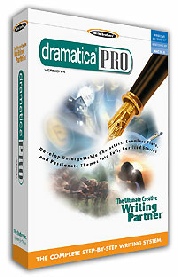No one reads a book or goes to a movie to enjoy a good structure. No author writes because he is driven to create a sound structure. Audiences and authors come to opposite sides of a story because of their passions – the author driven to express his, and the audience hoping to ignite its own.
As an audience, what draws us to a story in the first place is our attraction to the subject matter and the style. We might love a taut mystery, a fulfilling romance, or a chilling horror story. We might be intrigued by the potential applications of a new discovery of science, the exploration of newly unearthed ancient city, or the life of a celebrity.
As an author what brings us to write a story may be a clever concept for an action sequence, a bit of dialog, a notion for a character, a setting, time period, a favorite topic, or a clever twist of plot. Or, we might have a deep-seated need to express a childhood experience, work out an irrational fear, or make a public statement about a social injustice.
No matter what our attraction as audience or author, it is our passions that trigger our imaginations. But passion rides on structure, and if the structure is flawed or even broken, then the passionate expression from author to audience will fall.
When structure is done properly, it is invisible, serving only as the carrier wave that delivers the passion to the audience. But when structure is flawed, it adds static to the flow of emotion, breaking up and possibly scrambling the passion so badly that the audience gets nothing of what the author was sending.
Yet, the attempt to ensure a sound structure is an intellectual pursuit. Questions such as “Who is my Protagonist?” “Where should my story begin?” “What happens in Act Two?” or “What is my message?” force an author to turn away from his passion and embrace logistics instead.
As a result, an author often becomes mired in the nuts and bolts of storytelling, staring at a blank page not because of a lack of inspiration, but because he can’t figure out how to make his passion make sense. Worse, the re-writing process is often grueling and frustrating, forcing the author to accept unwanted changes in the flow of emotion for the sake of logic. So what is an author to do? Is there any way out of this dilemma?
Indeed there is. With the Dramatica you’ll discover a new way of working with stories – a method that allows an author to retain his passion even while serving the demands of structure. This system can be used both before you write to know exactly where things will be going and also after you write to find and refine the structure already hidden in your passion.
You won’t be asked to discard any techniques or approaches you are currently using. Rather, you’ll simply be adding to what you already know, to what you are already doing; extending your understanding of how stories really work and how to write them. So embark on an expedition into the uncharted frontiers of story structure. The risks are low, the potential rewards are great, and all you need to carry with you are your own passions.
Subscribe to:
Post Comments (Atom)







No comments:
Post a Comment